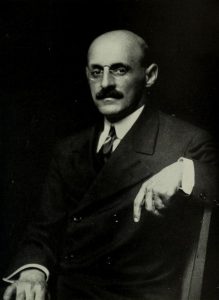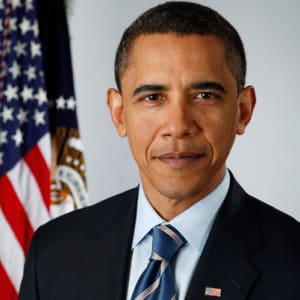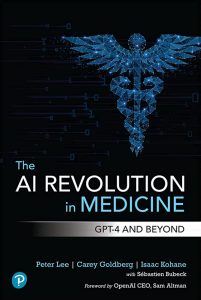– A Policy Statement –
THE HARD TRUTHS
America is an aging, unhealthy country.
Obesity and diabetes, heart disease still the No 1 killer, crippling alcohol and drug abuse, increasing poverty, significant problems with mental health, an aging population, bad personal habits, poor compliance with medical direction all contribute to this reality.
Physicians trained to deal with disease not contributory actions that cause disease and pressured by high rates of legal liability insurance, test obsessively.
Medicare, established to deal with aging America, pays for most of it at costs that continue to expand almost beyond our capacity to meet them.
When you add it all, we find ourselves with the most expensive healthcare in the World but far down the list of excellence among advanced industrial nations.
This is the starting point.
In the 18th Century, American physicians often killed more patients than they helped because no one had taught them to wash their hands between patients.
Medical schools were entrepreneurial activities. Businessmen opened them at will with no approved curriculum or set of educational and medical standards.

Two years later in 1912, Teddy Roosevelt recommended that America establish a national healthcare program.
More than a century passed until President Harry Truman proposed such a program in 1953 and twenty years later, President Lyndon Johnson signed a bill in 1965 establishing such a program including Medicare, a program of healthcare designed for our senior citizens.

A cardiologist at NYU Langone Medical Center recently told a patient…”don’t go near Medicare Advantage…They will kill you.”
So how does America provide its people with a Healthcare system that works?
Not very well.
FIRST, DO NO HARM
Three things are true right at the outset: American healthcare is the most expensive in the World.
American healthcare places 28th among the World’s major industrial nations in the quality of care it provides its population.
American healthcare is controlled by the health insurance and pharmaceutical industries: completely, totally controlled.
As one of our popular politicians put it “The fix is in”. Every politician who has a vote that counts for something in healthcare is “on the payroll”.

He was completely overwhelmed by the negative response of both political parties and despite his pleas – some of which were televised – was turned down flat.
Then Senate Majority Leader, Democrat Harry Reid told him he would never make that happen and advised him to remove it from his Affordable Care Act. Overwhelmed, he did.
And suddenly such Democrats as NY’s Chuck Schumer were at his side helping him to make some of the changes in that Act that helped it pass.
Freed of the pressure of a public insurance company competing with his admirers and supporters in the private industry, Schumer acted accordingly. The simple fact: He receives more money from the health insurance industry than any other member of the Senate.
The control by these massive industries brings tremendous weight against any law which threatens their tight grip on all areas of healthcare.
WHY IT DOESN’T WORK
Unlike any other professional in American life, physicians are saddled with high liability insurance payments from the moment they finish their medical education and hospital residency. They are sued for malpractice more than any other professional in our country. So-called plaintiff’s lawyers – see TV ads for verification – make a living suing medical practitioners.
Add student debt to those immediate insurance responsibilities and doctors, who were once thought to be America’s highest professional earners, lost that status by the weight of fiscal responsibilities right at the start of their careers.
The introduction of Medicare helped deepen that loss by generally cutting physician fees far more than it ever does the cost of hospitalization and treatments of all kinds.
If you are receiving Medicare you have seen monthly reports from them and from your secondary insurance company. They reveal how often a doctor’s fees are reduced even as treatments and hospitalization are essentially paid in full.
What do these two economic realities – heavy liability and Medicare income limitations – mean to a practicing physician that helps lower the effectiveness of our healthcare system?
They alter the way doctors practice medicine. They increase the need for a stream of patients which can take valuable time away from each. They cause an endless series of tests not only to be sure of a diagnosis but to lessen any liability concerns.
Pressured by a private practice or limited group practice, physicians increasingly turn to the very big business of corporate medical firms – huge and ever-growing medical practices offering to remove liability expenses, provide large salary increases they’ve not managed before and offer the sense of a big business which takes care of them in ways they have not experienced before.
Does that have to mean a loss of quality?
It doesn’t if the top management permits them to work as they did before – allowing them to maintain their own schedules and numbers of patients per day.
But most don’t. Most go for numbers not quality. It’s what makes those large salaries happen…makes the administrative pressures go away. All this without cost to the physicians involved…but for this: Three years after a physician joins the largest corporate medical practice in America, MDVIP, it will cost a physician one million dollars to buy himself out of it.
The other way physicians can add to their incomes is to make a certain number of hospital visits, whether they stay long or not…maybe three or four times in a week. Every visit provokes a fee.
Covid revealed the weakness of the entry door to so much healthcare…the hospital Emergency Room.
At one time if there was a medical emergency that was not life or death, you could call your own physician to meet you at an emergency room. No more.
Now you are at the mercy of busy, overworked emergency room residents, not as brilliantly talented as those you see in a TV medical series…just overloaded and able to cut corners at will.
So let’s take you into one now: The Valley Hospital in Paramus, New Jersey. Once a relatively small suburban hospital with a growing population base which spread throughout Bergan County, NJ …a major bedroom community for those who travel into NYC for work.
Today, it’s something else.
 Inside Valley’s ER now you will find a harried staff – an emergency room with beds crowding hallways, horribly short-staffed of the lifeblood and humanity of a hospital – the nurses and their aides – who are working with doctors who too often react on instinct and practice, not on facts or tests.
Inside Valley’s ER now you will find a harried staff – an emergency room with beds crowding hallways, horribly short-staffed of the lifeblood and humanity of a hospital – the nurses and their aides – who are working with doctors who too often react on instinct and practice, not on facts or tests.
And so it is no wonder that into that morass comes a woman in her 80th year…somewhat disoriented, weak, seriously depleted of energy and who knows what else. The doctors immediately decide she has a urinary tract infection (UTI) and inject her with a common antibiotic… a drug doctors give so often that there are new rules about what dangers they may carry.
This one does. Three days later, stronger now, the woman is shipped off to a rehabilitation facility. Five days later she suddenly gives the horrible signs of having C Difficile – a violent infection which is seriously contagious.
C Diff is caused by an antibiotic…an antibiotic she had no business receiving. She did not have a UTI. She was never tested for one.
Another ER horror story.
Nursing homes revealed a serious lack of executive ability during the Covid crisis when empty beds in nursing homes held Covid patients without separating and protecting the sick and well.
No matter where we look healthcare talent is in short supply with all kinds of pressures making their mark and leaving us unable to do our best work.
It will be impossible to improve healthcare in America without first finding a new answer that will help us deal with the essentials – the patient, the doctor, the diagnosis and the prescription.
That answer already exists.
You can find it on an app.
– A Policy Proposal –
THE AI REVOLUTION IN MEDICINE
GPT-4 AND BEYOND
 This title is actually the title of the first book introducing and analyzing the amazing possibilities of using the genius of Artificial Intelligence in healthcare.
This title is actually the title of the first book introducing and analyzing the amazing possibilities of using the genius of Artificial Intelligence in healthcare.
The authors Peter Lee, Carey Goldberg and Isaac Kohane had six months to study the working of ChatGPT and ChatGPT-4, the Large Language Model…a field of information so vast that most computers cannot measure it.
Lee, the computer scientist, Kohane , a Harvard pediatric endocrinologist and data scientist and Goldberg, a science writer for the Boston edition of the New York Times have written the future of AI in medicine and healthcare. They recognize and understand that the massive pattern ability of AI permits unlimited knowledge and the clarity of how that knowledge can be used by physicians and patients. Their book projects the certainty that all that knowledge and information dissemination will get more and more inclusive not in the years ahead but in the months ahead.
A simple example of ChatGPT-4’s present ability to diagnose in medicine is this: shown a photograph of a person’s retina, AI will accurately predict the sex of that person.
 Even now we must recognize that what is being developed – a super intelligence with the ability to acquire and employ information in ways never seen before – (but imagined years ago in what we innocently called “science fiction“) is now not only here but growing far more powerful, inclusive and useful by the day.
Even now we must recognize that what is being developed – a super intelligence with the ability to acquire and employ information in ways never seen before – (but imagined years ago in what we innocently called “science fiction“) is now not only here but growing far more powerful, inclusive and useful by the day.
When we begin to understand the astounding capacity for knowledge and the even more stunning ways in which that knowledge can be employed, we easily see that no single physician or group of medical experts in any field of medicine can compete.
Add to that the ways in which AI can learn to understand the nature of individual patients and their needs, and then know how to respond to them accordingly, we again see how that reality easily overwhelms the capacity of any doctor or group of doctors.
We will soon learn to accept that no single physician or medical specialty, no single system of diagnosis and treatment can ever begin to match what AI can and will do to bring it all “to the table” for every human needing healthcare.
If we consider the process by which healthcare is triggered – illness, physician visit, some sort of testing that helps lead to a diagnosis and the skills of decision making regarding treatment – the entire system begins to change radically when a consideration of AI’s capacity enters the picture.
The crippling cost factors of American healthcare can be seriously reduced as the diagnostic procedure becomes more direct and incisive with the greater knowledge of AI at work. The increasing shortage of healthcare workers will lessen into levels we can handle. The mad scramble of ER conditions will significantly moderate and the costs of liability insurance and even medical school will no longer carry the financial weight they do now as the traditional role of physician will be altered to become instead an actual care giver assisting in the process rather than struggling to control it.
HOW WILL IT WORK?
 Initially, physicians will still be the lead person in the process. They will conduct a cursory examination and then feed the information they obtain into an AI app seeking amplification, clarification and direction.
Initially, physicians will still be the lead person in the process. They will conduct a cursory examination and then feed the information they obtain into an AI app seeking amplification, clarification and direction.
In a sense AI will then take over deepening the examination and recommending the kind of testing necessary. AI will intuitively understand far more about the patient than the doctor can gather and so gain information the doctor may never receive.
But in time, the examination will take place between the app and the patient with the doctor playing less of a hands-on role. All the information obtained will be gathered and interpreted by the app with direction for testing to follow and then after the information is captured and absorbed, treatment recommendations will be made.
What we will see in a remarkably short time is that sheer information not only about the nature of the medical problem but of the patient as well will combine to produce the kinds of treatments that work and that what seems like mechanization – cold, terrifically smart and swift – will be far more than that because an AI app properly programmed will learn not only about the patient and the cause of the disease but whether or not the patient will follow treatment direction. It will bring the idea of compliance to extraordinarily positive levels.
Which brings us back to the beginning of our examination of what is wrong with our healthcare system. We stressed that it is controlled by the money of the health insurance and pharmaceutical industries…and with that control the influence over how healthcare works..
Will this completely new model of healthcare delivery impact that control?
Will Big Pharma continue to influence the work of the FDA even as it supports it? And will that Federal agency have the same influence on medications and treatments as it does today?
Will any of this matter anymore when healthcare delivery actually delivers and by so doing significantly cuts the waste and duplicity of the current system?
We think none of it will be the same. We suggest that the power and performance of AI will stabilize American healthcare so that it performs as it should without the games of these outside forces.
We note again that AI is being developed by billions of private, corporate dollars. That will mean that the profit motive will drive all sorts of actions and activities…some beneficial to Americans, some not.
Those of us who still believe that government is the only entity to help level the playing field between the power of money and the needs of people, will find a way to fairly introduce limitations on the marketplace so that the nation can benefit from this almost unbelievable technology.
We are momentarily at the beginning, but the pace of growth is beyond anything we have known…as is Artificial Intelligence itself, Complex, brilliant and here.

We have here a nice historical precis of medicine in the USA.
Again, there seems to be an issue of nomenclature here.
A quote from the above essay:
“American healthcare is controlled by the health insurance and pharmaceutical industries: completely, totally controlled.”
Healthcare is said to be what medicine provides. Many would say that healthcare is primarily up to the individual with assistance from one’s family. Medicine in all its categories plays a secondary role, What do individuals do for their health? Another quote from the above essay is apropos;
“Obesity and diabetes, heart disease still the No 1 killer, crippling alcohol and drug abuse, increasing poverty, significant problems with mental health, an aging population, bad personal habits, poor compliance with medical direction all contribute to this reality.”
The reason for the poor aggregate health of Americans is shown here. Medicine is not to blame. The equation.
healthcare = medicine is a false one Rather the expression healthcare > medicine is more accurate. Medicine plays a part, of course yet it cannot be expected to repair an individual’s bad behavior.